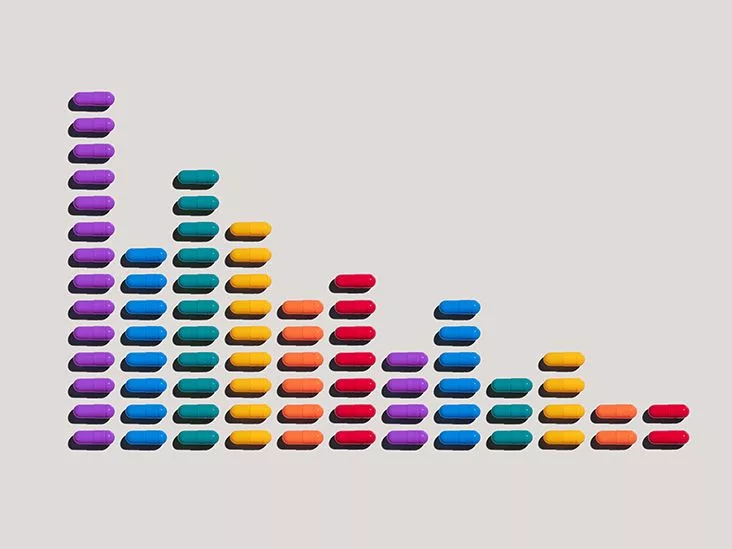Hey there, friend. If you’ve ever felt that uneasy flutter in your stomach at the thought of stopping a medication, you’re not alone. Medication tapering—the art of lowering a drug’s dose bit by bit—can feel like a tightrope walk, but it doesn’t have to be scary. Below is a warm, down‑to‑earth guide that walks you through the why, what, and how of a gentle dose reduction, peppered with real stories, handy tables, and a few pro tips you won’t find in a dry textbook.
Why Tapering Matters
First off, why bother with a slow taper at all? Imagine your brain and body as a well‑trained orchestra. When a medication is removed abruptly, it’s like pulling the conductor out mid‑performance—everything can stumble.
- Minimizes withdrawal: A gradual dose reduction lets neurotransmitters adjust, keeping crazy cravings, “brain zaps,” or shaky hands at bay.
- Protects health: Sudden stops can trigger spikes in blood pressure, seizures, or intense mood swings, especially with drugs that have a short half‑life.
- Preserves confidence: Knowing you have a clear plan reduces anxiety and gives you a sense of control over your own healing journey.
According to Healthline, tapering is the medical term for “gradually reducing dosage,” and research shows that people who use a structured taper schedule are far less likely to experience severe withdrawal. Think of it as the difference between a gentle downhill stroll and a sudden drop off a cliff.
Design Your Taper
Every medication has its own personality, so a one‑size‑fits‑all plan won’t work. Below are the main variables to consider when crafting a personalized taper:
- Drug class: Antidepressants, beta‑blockers, antiepileptics, and atypical antipsychotics each have their own quirks.
- Half‑life: A long‑acting drug (like fluoxetine) can afford bigger jumps; short‑acting ones (like paroxetine) need smaller steps.
- Duration of use: The longer you’ve been on a medication, the slower you’ll likely need to go.
- Personal health factors: Age, liver function, co‑existing conditions, and other meds all play a part.
The “10 % exponential taper” is a popular, evidence‑backed method. It means you cut the current dose by 10 % every few weeks, recalculating the 10 % on the newest dose each time. This creates an exponential decay curve that is gentler on your nervous system than a straight‑line reduction.
Here’s a quick example for a medication that starts at 100 mg:
| Step | Current Dose (mg) | 10 % Reduction (mg) | New Dose (mg) |
|---|---|---|---|
| 1 | 100 | 10 | 90 |
| 2 | 90 | 9 | 81 |
| 3 | 81 | 8.1 | 73 |
| 4 | 73 | 7.3 | 66 |
| 5 | 66 | 6.6 | 60 |
| … | … | … | … |
Notice how each step gets a little smaller? That’s the magic—your brain isn’t jolted by a huge drop, and you can adjust the interval (usually 2–4 weeks) based on how you feel.
Prep Before Starting
Preparation is half the battle. Think of it as packing for a road trip—you want a map, snacks, and a spare tire, just in case.
- Keep a symptom diary: Jot down the exact time you take each dose, the amount, and any physical or emotional changes. A simple paper notebook works wonders; the SurvivingAntidepressants community swears by this habit.
- Get medical supervision: A prescriber who knows tapering can adjust your plan on the fly and prescribe low‑strength tablets or liquid forms when needed.
- Gather tools: A digital milligram scale, a quality pill cutter, and—if your drug comes only in large tablets—a compounding pharmacy that can make micro‑tapers (the “Brassmonkey Slide” method is a fan favorite).
- Talk it out: Write down questions for your doctor: “Can we start with a 10 % reduction every four weeks?” or “Do you have a liquid version of this medication?”
When you have everything laid out, you’ll feel calmer and more empowered—as if you’re steering the ship instead of being tossed by the waves.
Manage Withdrawal Symptoms
Even with the best plan, occasional bumps may appear. Here’s how to stay on course:
- Know the warning signs: Nausea, insomnia, “brain zaps,” jittery heartbeats, sudden mood swings, or spikes in blood pressure. If any of these feel severe, pause the taper.
- Slow down or pause: Return to the last stable dose for a week (or more) until symptoms settle, then resume the next tiny step.
- Support your body: Hydration, balanced meals, magnesium, B‑vitamins, and gentle exercise (think yoga or short walks) can smooth the ride. The withdrawal research site offers detailed nutrition tips for antidepressant tapering.
- Seek urgent care when needed: Sudden high blood pressure after stopping a beta‑blocker, or terrifying seizures when tapering an antiepileptic, warrant immediate medical attention.
Remember, a little discomfort is normal, but pain that feels like a “red flag” is your body shouting, “I need more time!” Listening to that voice is the safest strategy.
Special Drug Types
Not all meds behave the same. Below is a quick snapshot of the most common drug families and their taper quirks.
- Antidepressants (SSRIs/SNRIs): Drugs like escitalopram or duloxetine often require a 2–4 week interval between 10 % cuts. Fluoxetine’s long half‑life lets you stretch the interval a bit longer.
- Antiepileptics: Carbamazepine, gabapentin, and levetiracetam can trigger seizures if reduced too fast. A neurologist’s guidance is essential, and a slower taper (sometimes 5 % steps) is safer (Healthline notes this).
- Beta‑blockers & Clonidine: Stopping these suddenly can cause a scary rebound in heart rate and blood pressure. Aim for 5–10 % reductions every 2–3 weeks, and keep a blood pressure cuff handy.
- Atypical antipsychotics (quetiapine, clozapine): Extended‑release tablets often come in 50 mg increments, so you may need to split tablets or ask a compounding pharmacy for custom strengths. The community suggests a 10 % per month cut as a starting point.
- Opioids and other controlled substances: Legal regulations often demand a formal taper‑program approval. Work closely with a pain specialist and follow local prescribing guidelines.
Real Stories & Tips
Data is great, but nothing beats hearing how real people walked the path.
Case 1 – The 6‑Month SSRI Taper: Maya started at 20 mg of escitalopram. She followed a 10 % schedule, kept a paper diary, and paused twice when she felt “brain zaps.” By month six she was medication‑free, and she says the diary “saved my sanity.”
Case 2 – The Antiepileptic Challenge: Carlos had been on levetiracetam 1500 mg for three years. His neurologist recommended a 5 % monthly reduction, plus weekly EEG checks. He also used a digital scale to measure 0.5 mg micro‑doses. After a year, he successfully stopped without a seizure.
Community veterans on SurvivingAntidepressants.org often share a golden rule: “Never skip doses to taper.” Skipping creates an uncontrolled drop that can ignite withdrawal — much like skipping a beat in a song and hearing a jarring silence.
Final Thoughts
Medication tapering is not a race; it’s a marathon paced to your body’s rhythm. By understanding why a gradual dose reduction matters, building a realistic taper schedule, and arming yourself with diaries, tools, and supportive clinicians, you give yourself the best chance to transition off a drug safely.
Take a deep breath. You’ve already shown courage by seeking information. Now, pick up that notebook, set your first tiny 10 % goal, and remember: every small step is a victory worth celebrating. If you have questions, stories, or just need a virtual high‑five, drop a comment below. We’re all in this together.


















Leave a Reply
You must be logged in to post a comment.